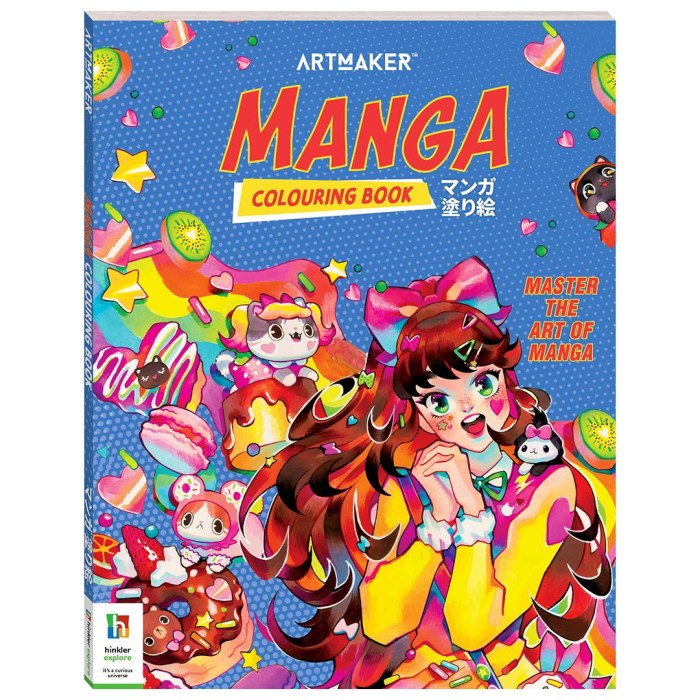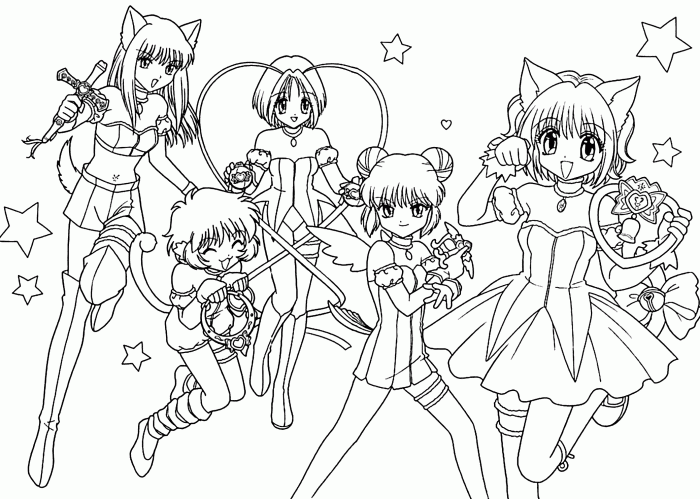Market Research

Understanding the target audience for an anime drawing coloring book is crucial for successful marketing and product development. This research will help define the ideal customer profile and inform design choices, marketing strategies, and overall product appeal.
Anime drawing coloring books offer a fantastic way to explore your artistic side, providing pre-drawn outlines ready for your creative flair. If you’re looking for a great starting point with diverse character designs, consider utilizing resources like anime base coloring pages to build your skills. These pages provide a solid foundation for practicing different coloring techniques before diving into more complex anime drawing coloring book illustrations.
Typical Demographic and Key Characteristics of Buyers
The typical buyer of an anime drawing coloring books spans a wide age range, but generally skews towards individuals with a pre-existing interest in anime and manga, art, and creative expression. While children and teens form a significant portion of the market, adults, particularly young adults and those with nostalgic connections to anime, also constitute a substantial consumer base.
Three key characteristics that define this target audience are: a passion for anime and manga; an interest in art and creative activities; and a desire for relaxation and stress relief.
Effective Marketing Strategies
Reaching this diverse audience requires a multi-faceted approach. Marketing strategies should leverage online and offline channels. Online platforms like social media (Instagram, Pinterest, TikTok, and YouTube) are ideal for showcasing vibrant artwork, engaging with fans, and running targeted ads. Collaborations with anime-related influencers and artists can significantly boost brand visibility. Offline, partnerships with bookstores, comic shops, and art supply stores can ensure product visibility in relevant retail spaces.
Targeted advertising on websites and platforms frequented by anime fans is another effective strategy. For example, advertisements could appear on anime streaming services or fan forums. Furthermore, running contests and giveaways centered around the coloring book can generate excitement and engagement.
Age Group Preferences in Anime Style, Color Palettes, and Design Complexity
The preferences regarding anime style, color palettes, and design complexity vary significantly across different age groups within the target audience. The following table illustrates these differences:
| Age Group | Anime Style Preference | Color Palette Preference | Design Complexity Preference |
|---|---|---|---|
| Children (6-12) | Cute, chibi-style characters; bright, simple designs | Bright, primary colors; bold contrasts | Simple, large Artikels; minimal detail |
| Teenagers (13-19) | More realistic or stylized anime; dynamic poses and expressions | Wider range of colors; pastel shades, vibrant accents | Moderate complexity; more detailed designs with intricate backgrounds |
| Young Adults (20-35) | Wide range of styles; preference for specific genres (e.g., shojo, shonen); detailed character designs | Subtle color gradients; muted tones; atmospheric color schemes | High complexity; intricate details, challenging designs |
Content Analysis

This section delves into the visual elements that contribute to the widespread appeal of anime-style coloring books, examining the diverse artistic styles and providing examples of coloring page designs catering to different skill levels. We will also explore the emotional impact of color palettes commonly used in anime art.
The enduring popularity of anime coloring books stems from a confluence of factors, primarily the inherent visual attractiveness of the art style itself. The expressive nature of anime characters, coupled with dynamic compositions and vibrant color schemes, creates a compelling and engaging experience for both artists and colorists.
Stylistic Elements of Appealing Anime Art
Anime art’s appeal in coloring books is largely due to its distinctive stylistic features. Large, expressive eyes convey a wide range of emotions, making characters instantly relatable and endearing. Dynamic poses and action-packed scenes provide opportunities for creative coloring and interpretation. The use of vibrant, often unrealistic colors further enhances the overall visual impact, allowing for bold and imaginative color choices.
These elements combine to create a visually rich and engaging experience that transcends age and cultural boundaries.
Differences in Anime Art Styles
Anime encompasses a wide range of styles, each with its own unique characteristics. Shoujo anime, often targeting a female audience, typically features slender characters with large, expressive eyes and romantic storylines. Shonen anime, aimed at a male audience, frequently showcases more muscular characters and action-oriented narratives. Mecha anime, focused on giant robots, presents intricate mechanical designs that offer complex coloring challenges.
These diverse styles offer a variety of aesthetic options for coloring book creators and consumers alike. The variations in character design, background detail, and overall composition create a diverse range of coloring experiences.
Sample Coloring Page Layouts
The following describes three sample coloring page layouts designed for different skill levels:
Beginner: A simple character design, such as a chibi (super-deformed) character with minimal details and a large, single-color area for easy coloring. The character might be in a simple pose, perhaps sitting or standing with minimal background elements. This design emphasizes basic shapes and color application, making it ideal for younger children or beginners.
Intermediate: A more detailed character design with varied line weights and shading suggestions. The character might be in a more dynamic pose with some background details, such as simple foliage or a cityscape. This design encourages exploration of shading techniques and color blending, offering a greater challenge for intermediate colorists.
Advanced: A complex character design with intricate details, including clothing folds, hair strands, and background elements. The character could be engaged in a complex action scene with a detailed background, requiring careful attention to detail and a high level of coloring skill. This design provides a significant challenge, allowing experienced colorists to showcase their skills.
Frequently Used Anime Color Palettes and Their Emotional Impact
Anime frequently employs specific color palettes to evoke particular emotions. For example, warm colors like reds and oranges often convey feelings of passion, excitement, or anger. Cool colors like blues and greens frequently represent calmness, sadness, or mystery. The use of contrasting colors can create visual tension and drama, while complementary colors can enhance harmony and balance.
Pastel shades often evoke feelings of gentleness and innocence, while bold, saturated colors convey energy and vibrancy. The strategic use of color is a crucial element in conveying the mood and atmosphere of an anime scene and, consequently, in the coloring book experience.
Illustrative Examples: Anime Drawing Coloring Book

This section provides detailed descriptions of various anime-inspired coloring book designs, catering to different skill levels and artistic preferences. The examples showcase diverse character designs, complex backgrounds, and simpler options for beginners, along with a variety of line art styles.
Anime Character Design
This design features a female anime character with long, flowing, wavy teal hair styled in a half-updo, adorned with a delicate silver hair clip shaped like a crescent moon. She wears a knee-length, pleated, light pink skirt with white lace trim along the hem. A fitted, short-sleeved, white blouse, cinched at the waist with a light blue ribbon, completes her outfit.
She is depicted in a dynamic pose, gracefully leaping in mid-air with her arms outstretched, conveying a sense of joyful energy. Her eyes are large and expressive, and she has a small, delicate nose and a cheerful smile. She wears simple white ankle boots.
Complex Background Scene
The background scene depicts a bustling cityscape at night, viewed from a high vantage point. The perspective utilizes a strong two-point perspective, creating a sense of depth and distance. Buildings of varying heights and architectural styles are depicted, with bright neon signs illuminating the streets below. A network of roads and bridges can be seen snaking through the cityscape, with tiny cars represented as small, simple shapes to maintain a balance between detail and coloring-book simplicity.
In the far distance, the cityscape fades into a hazy, purple-toned sky, punctuated by the glow of distant lights. Flying lanterns are scattered across the sky, adding a touch of magic to the scene.
Beginner-Friendly Anime Animal Design, Anime drawing coloring book
This design features a cute, chibi-style fox with large, round ears, a fluffy tail, and bright, sparkling eyes. The fox is sitting upright, with its paws tucked neatly under its chin. It has a simple, rounded body shape and is wearing a small, red scarf tied around its neck. The overall design is characterized by its simplicity and lack of intricate details, making it suitable for younger children or beginners.
The line art is clean and bold, with minimal shading.
Line Art Styles for Coloring Pages
Different line art styles significantly impact the final look and feel of a coloring page. Three distinct styles are presented below.
Style 1: Bold and Simple This style utilizes thick, consistent lines with a smooth, clean texture. There is minimal shading or texture within the lines themselves. This style is ideal for beginners and younger colorists, allowing for easy coloring without getting bogged down in intricate details.
Style 2: Detailed and Textured This style features thinner, more varied lines, with slight variations in thickness to add depth and dimension. The lines themselves incorporate texture, such as subtle hatching or cross-hatching, to add visual interest. This style is suitable for intermediate colorists who enjoy adding detail and shading to their work.
Style 3: Shaded and Dynamic This style uses a combination of thick and thin lines to create a sense of movement and depth. Heavy shading is incorporated within the lines themselves, often using a combination of hatching and cross-hatching to create a range of tones and values. This style is suitable for advanced colorists who are comfortable with more complex techniques.
